Hedge Trimming in Sanderstead: Ensuring a Beautiful and Healthy Garden
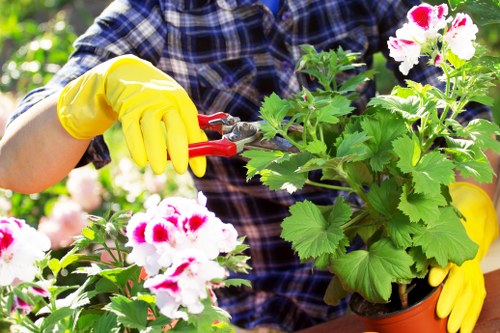
Maintaining the beauty and health of your garden in Sanderstead starts with proper hedge trimming. Hedges not only enhance the aesthetic appeal of your property but also provide privacy, serve as windbreaks, and create a structured look in your outdoor space. Regular trimming ensures that your hedges remain lush, vibrant, and free from diseases.
In this article, we will delve into the importance of hedge trimming, the best times to trim, choosing the right service, and essential tips for maintaining healthy hedges. Whether you're a gardening enthusiast or a homeowner looking to improve your landscape, this guide will provide valuable insights into effective hedge trimming practices.
Understanding the nuances of hedge trimming can make a significant difference in the overall appearance and longevity of your plants. From selecting the right tools to knowing the correct techniques, each step plays a crucial role in achieving the desired results.
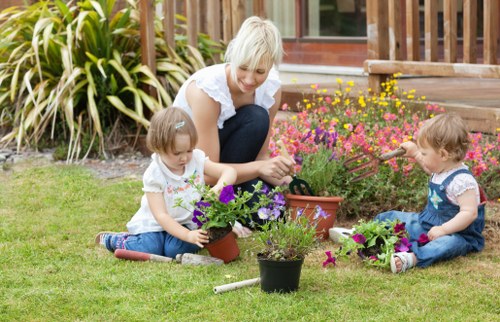
Importance of Regular Hedge Trimming
Regular hedge trimming is fundamental to the health and appearance of your hedges. It promotes vigorous growth, prevents overgrowth, and maintains the desired shape and size. Without consistent maintenance, hedges can become unruly, harbor pests, and suffer from reduced sunlight exposure, leading to weakened plants.
Moreover, well-trimmed hedges contribute significantly to the overall landscape design, providing structure and definition to your garden. They can act as natural fences, enhancing privacy and creating a serene environment for relaxation.
Regular trimming also helps in identifying and removing diseased or damaged branches, preventing the spread of diseases and ensuring that your hedges remain robust and healthy.
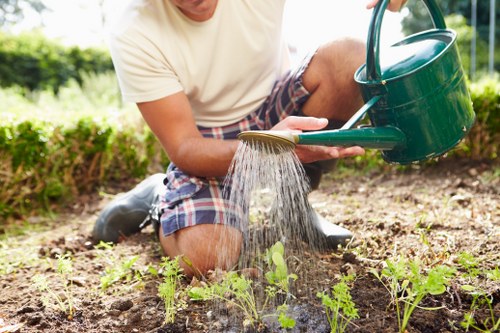
When to Trim Your Hedges in Sanderstead
Timing is crucial when it comes to hedge trimming. In Sanderstead, the best times to trim your hedges are during the late winter or early spring before new growth begins, and again in late summer or early autumn after the growing season. Trimming during these periods ensures that the hedges have ample time to recover and grow vigorously.
Seasonal considerations play a vital role in determining the optimal time for trimming. For instance, trimming in the spring stimulates fresh growth, while trimming in the autumn helps in shaping and preparing the hedges for the upcoming winter.
Understanding the growth patterns of your specific hedge varieties will help you schedule trims effectively, ensuring minimal stress on the plants and promoting healthy growth.
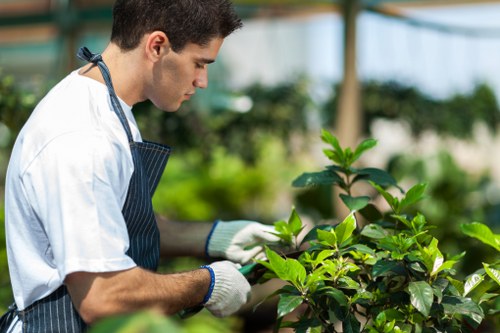
Choosing the Right Hedge Trimming Service
Selecting a professional hedge trimming service in Sanderstead can save you time and ensure high-quality results. When choosing a service provider, consider their experience, reputation, and the range of services they offer. A reputable company will have skilled technicians who understand the intricacies of different hedge types and the best trimming techniques.
It's essential to ask potential service providers about their methods, the tools they use, and their approach to sustainability. Ensuring that they follow environmentally friendly practices can contribute to the overall health of your garden and the surrounding ecosystem.
Additionally, comparing quotes and understanding the pricing structure can help you make an informed decision without compromising on quality.
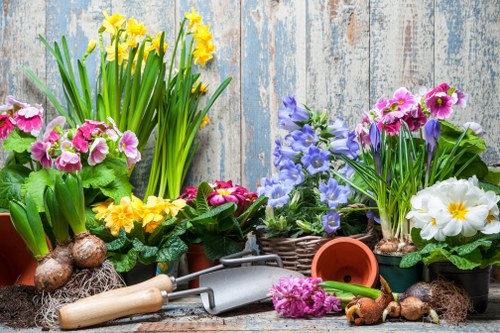
DIY vs Professional Hedge Trimming
While some homeowners may prefer the hands-on approach of DIY hedge trimming, opting for professional services comes with its advantages. Professionals bring expertise, ensuring precise and consistent cuts that promote healthy growth. They have access to specialized tools that may not be readily available to the average homeowner.
However, DIY trimming can be cost-effective and offer a sense of accomplishment. It's essential to weigh the pros and cons based on your skill level, the size of your hedges, and the time you can dedicate to maintenance.
Regardless of the choice, maintaining regular trims is key to keeping your hedges in optimal condition.

Tools and Techniques for Effective Hedge Trimming
Essential Tools for Trimming
Having the right tools is essential for effective hedge trimming. Basic tools include sharp hedge shears, electric or manual hedge trimmers, and loppers for thicker branches. For larger hedges, a pole trimmer can help reach higher areas without the need for ladders, enhancing safety and efficiency.
Maintaining your tools by keeping them clean and sharp will ensure smooth cuts and reduce the risk of damaging the plants. Investing in high-quality tools can also improve the overall trimming experience, making the process quicker and more precise.
Safety equipment such as gloves, safety glasses, and sturdy footwear should also be part of your trimming toolkit to protect against potential injuries.
Step-by-Step Trimming Process
Proper trimming techniques are crucial for achieving the desired shape and promoting healthy growth. Here’s a step-by-step guide to effective hedge trimming:
- Assess the Hedge: Examine the overall shape and identify any diseased or damaged branches.
- Plan the Shape: Decide on the desired shape and size, whether it’s a formal geometric outline or a more natural appearance.
- Start Trimming: Begin trimming from the bottom layers upwards, ensuring even cuts.
- Maintain Consistency: Keep the trimming consistent to avoid uneven growth and to maintain the overall shape.
- Clean Up: Remove all trimmed branches and debris to promote a clean and healthy garden environment.

Maintaining Your Hedges After Trimming
Regular Maintenance Tips
Post-trimming maintenance is vital to ensure the longevity and health of your hedges. Regularly monitor your hedges for signs of pests or diseases and address any issues promptly. Mulching around the base of the hedges can help retain moisture, regulate soil temperature, and suppress weed growth.
Watering your hedges appropriately, especially during dry spells, ensures that they remain hydrated and resilient. Additionally, feeding them with the right fertilizers can promote lush growth and enhance their overall vitality.
Preventing Common Issues
Common issues such as overgrowth, pest infestations, and diseases can be prevented through consistent maintenance and proper trimming techniques. Ensuring adequate sunlight exposure by removing excess foliage can reduce the risk of fungal infections and other diseases.
Implementing integrated pest management strategies, such as introducing natural predators and using eco-friendly pesticides, can keep pest populations under control without harming the environment.
Regularly inspecting your hedges and addressing any problems early on will help maintain their health and beauty.

Environmental Considerations in Hedge Trimming
Sustainable Practices
Adopting sustainable practices in hedge trimming not only benefits your garden but also the environment. Using electric trimmers instead of gas-powered ones reduces fossil fuel consumption and minimizes noise pollution. Additionally, opting for manual tools where feasible can further decrease your carbon footprint.
Composting the trimmed branches and leaves is an eco-friendly way to dispose of garden waste, providing valuable nutrients for your soil and reducing landfill contributions.
Minimizing Waste
Effective waste management practices are essential in minimizing the environmental impact of hedge trimming. Utilizing green waste recycling programs in Sanderstead can ensure that the trimmed materials are repurposed rather than discarded. This approach supports a sustainable ecosystem and promotes responsible gardening practices.
By thoughtfully managing garden waste, you contribute to the overall health of the environment and set a positive example for sustainable living.

Top Hedge Plants for Sanderstead Gardens
Popular Varieties
Choosing the right hedge plants is crucial for achieving the desired look and ensuring easy maintenance. Popular hedge varieties in Sanderstead include:
- Boxwood (Buxus sempervirens): Known for its dense foliage and ability to hold shape well.
- Privet (Ligustrum vulgare): Fast-growing and versatile, ideal for creating privacy screens.
- Yew (Taxus baccata): Evergreen with dark green needles, suitable for formal gardens.
- Holly (Ilex aquifolium): Adds color with its red berries and glossy leaves.
Each variety offers unique benefits and aesthetics, allowing you to customize your garden according to your preferences.
Planting and Care Tips
Proper planting and care are essential for establishing healthy hedges. Start by selecting the right location with adequate sunlight and suitable soil conditions. Spacing the plants correctly ensures optimal growth and reduces competition for nutrients and water.
Regular watering, especially during the establishment phase, helps the plants develop strong roots. Mulching around the base of the plants conserves moisture and suppresses weeds.
Pruning should be done carefully, avoiding excessive cutting that can stress the plants. Follow recommended trimming schedules to maintain the desired shape and promote healthy growth.

Frequently Asked Questions About Hedge Trimming in Sanderstead
How often should I trim my hedges?
The frequency of hedge trimming depends on the type of hedge and the growth rate of the plants. Generally, hedges should be trimmed two to three times a year—early spring, midsummer, and late autumn. Regular trimming encourages dense growth and maintains the desired shape.
Can I trim my hedges myself?
Yes, you can trim your hedges yourself if you have the right tools and knowledge. DIY trimming can be cost-effective and allows you to control the shape and style of your hedges. However, for larger or more complex hedges, hiring a professional service may be more efficient and ensure precise results.
What are the best hedge trimming tools?
The best tools for hedge trimming include sharp hedge shears for precision, electric or manual hedge trimmers for larger areas, loppers for thick branches, and pole trimmers for reaching higher sections. Investing in high-quality tools will make the trimming process easier and more effective.

Conclusion and Call to Action
Maintaining well-trimmed hedges in Sanderstead is essential for a beautiful, healthy, and organized garden. Whether you choose to undertake the task yourself or hire a professional service, regular trimming plays a pivotal role in the overall health and appearance of your outdoor space.
By understanding the best practices, selecting the right tools, and knowing when to trim, you can ensure that your hedges remain lush and vibrant year-round.
Ready to transform your garden with expert hedge trimming? Contact us today to schedule your service and enjoy a beautifully maintained garden that stands out in Sanderstead!
